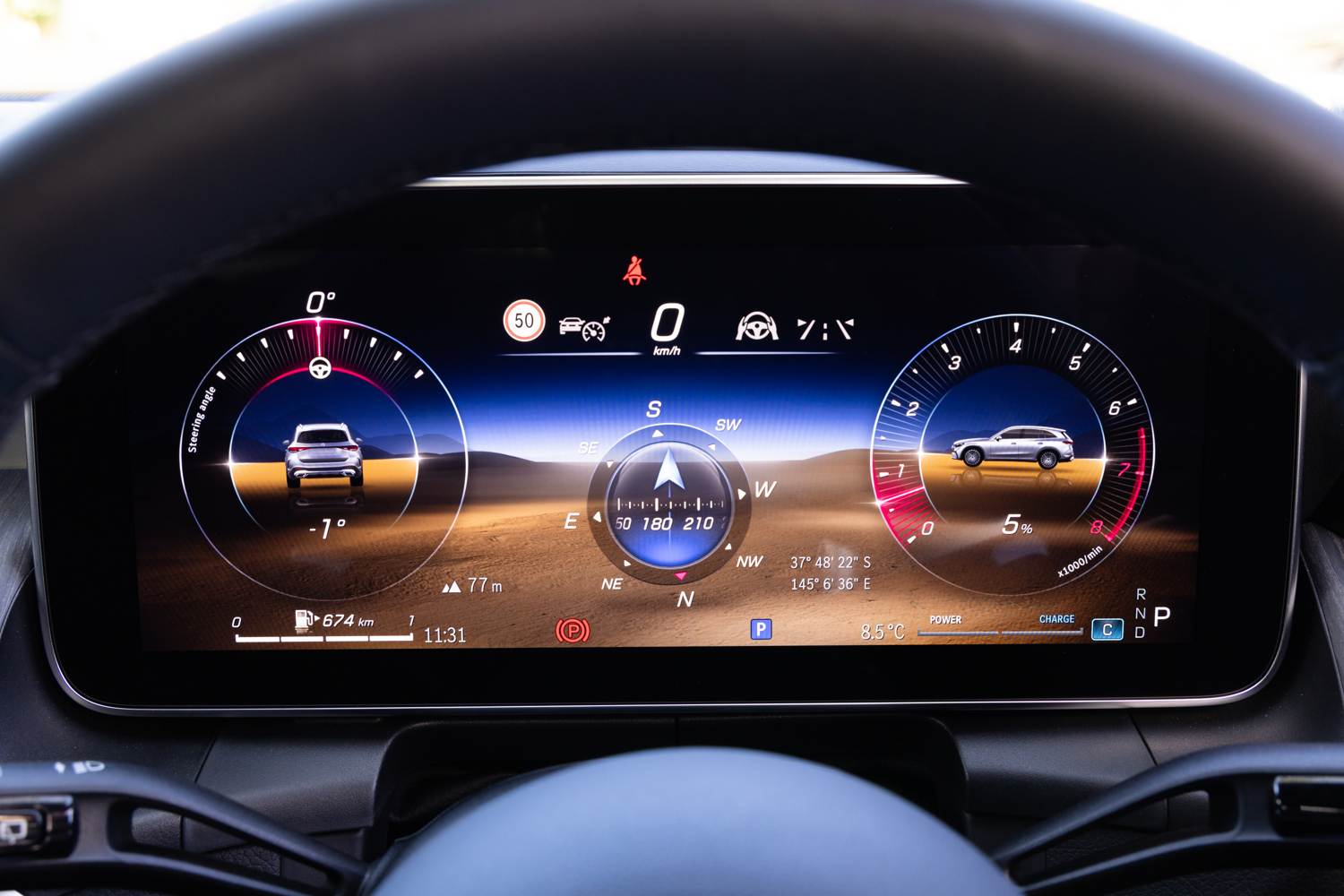Second-generation Mercedes-Benz GLC hits all the right spots without trying too hard.
Nice. Really nice, actually. That might seem like I’ve just damned the new-generation Mercedes-Benz GLC 300 with lukewarm faint praise, but it’s an honest and accurate compliment. You see, too many cars try to be too many things and end up missing the mark on most of the goals, often the result of conflict between engineering and marketing departments. That’s why we’re drawn to cars that do exactly what it says on the tin. Clear goal, job done.
Aside from the standard fit AMG Line exterior and interior packages, the new GLC 300 isn’t trying to be put the focus on the S in SUV. Instead, it’s not too firm, not too soft, not too fast and not too slow. It is perfectly – nicely – comfortable and luxurious with all the performance and dynamic capability that the typical buyer would expect. Importantly, after hundreds of kilometres covering varying road and weather conditions, the GLC 300 didn’t throw up any annoying surprises that so often trip up a vehicle’s competency and long-term enjoyment. Nice.
The second-generation GLC launches initially in SUV guise but will be joined later in the year by the Coupe variant. In time, we can also expect an AMG variant of both, and though it’s yet to be announced, smart money suggests that its powertrain will mirror that of the plug-in hybrid C63 S E Performance. For now, the simplified GLC range features just the single model – GLC 300 – with a generous level of standard equipment that leaves few options on the configurator.
Beyond the AMG Line interior and exterior packages, the panoramic sunroof leads the standard equipment list, which also includes metallic paint, 20-inch alloys and head-up display. New to the second-gen GLC is an off-road display mode that shows incline, gradient, compass and altitude. Not that Benz expects GLC customers to tackle The Simpson, but the ‘transparent bonnet’ feature provides a view on the central screen of any obstacle in front of or under the vehicle.
The numbers aren’t huge, but tweaks to the dimensions give the new GLC a more sporting stance. The 4mm drop in overall height combines with the 60mm increase in overall length to elongate the profile. Just 15mm of the stretch is added to the wheelbase, with most of it taken up in longer overhangs (12mm at the front and 33mm at the rear). Though overall width remains the same as the previous model (1890mm), track widths have increased by 6mm at the front (up to 1627mm) and 23mm at the rear (now 1640mm).
Aside from the 50mm increase in luggage-space length, the new dimensions don’t bring a great deal of change over the first-gen model. Front headroom drops by 16mm, but at 180cm and wearing a baseball cap, I had plenty of clearance, and none of my taller colleagues on the launch of the GLC complained. Rear elbow room increases by 6mm, otherwise leg, shoulder, elbow and rear headroom remain the same or move up or down by a millimetre or two.
Under the bonnet is a 1999cc turbocharged four-cylinder engine that makes 190kW at 5800rpm and 400Nm from 2000-3200rpm. The new GLC 300 also boasts a 48-volt electrical system that runs the improved second-gen Integrated Starter Generator (ISG). The ISG is more efficient than a belt-driven starter/generator recuperating energy at a higher level. It can also provide an additional boost of 17kW and 200Nm in certain circumstances, and the gliding function brings a useful 0.5L/100km reduction in official fuel consumption – down to 7.7L/100km. The engine drives all four wheels via a nine-speed automatic gearbox.
The interior is very impressive with quality materials and a clear and concise layout of dash and controls. Some find the haptic controls on the steering wheel too sensitive but I didn’t struggle with them (and I’m usually the first to complain about technology for technology sake). The AMG Line front seats offer support but won’t turn off those only after comfort.
From the driver’s seat, the first thing that I notice is the modestly sized wing mirrors. They provide all the visibility that you need, but they don’t create annoying blindspots like so many Dumbo-mirrored SUVs. Such a mundane detail won’t set your heart a flutter, but it’s another example of the niceness of the new GLC.
That impression continues on the move with a car that’s easy to drive. The GLC glides its way through the industrial parks surrounding Melbourne’s airport and on to roads that offer a variety of surfaces. Despite the AMG Line looks, the GLC 300 runs the standard comfort suspension, and it does a terrific job of maintaining cabin serenity while controlling the mass and movement of the body. Because the GLC 300 doesn’t shout sporting credentials that it doesn’t have, you’re less tempted to drive it in such a way to really challenge the chassis.
That’s not to say that the GLC 300 is slow or without dynamic merit. Indeed, the claimed 0-100km/h time would see off many of today’s best hot hatches and should you find yourself flying solo on an interesting road, the GLC has grip aplenty, linear steering and a brake pedal that is easy to modulate and provides arresting performance. You can even use some weight transfer to tuck in the nose, but that kind of driving might remove you from the nice list, especially if you have passengers on board.
As the brand’s top-selling SUV, the GLC is a hugely important model for Mercedes-Benz. Dealers should breathe easy that the new car improves on the attributes of the old, offering standard features to entice new customers, without any annoying traits to alienate current owners.









